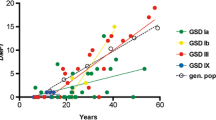Abstract
In 1919, the first report on Kashin-Beck disease (KBD) made by a Japanese doctor described an endemic occurrence in the northern district of Korea. In the 1930s, Dr. Takamori and his colleagues at Manchuria Medical College produced a series of reports on its endemiology, clinical and roentgenological findings observed in the north-eastern district of China. In 1940s, a Tokyo University group led by Dr. Ogata found that the salivary glands of KBD patients were markedly degenerated. Administration of the condensed water taken from the endemic area into experimental rats produced degeneration of the salivary glands and changes in bones and joints similar to those of KBD. Thus, they proposed parotin deficiency theory as the etiology of KBD, and they recommended parotin therapy for KBD in its early stage. In the 1950s, Dr. Takizawa and his colleagues at Chiba University demonstrated that ferulic acid and p-hydroxy-cinnamic acid, found in the drinking water in the endemic area, caused degeneration of the salivary gland in rats. They recommended boiling the drinking water or using activated charcoal for the prevention of KBD. In the 1970s, the Japanese Ministry of Health and Welfare made a nationwide survey for the incidence of KBD in Japan. They concluded that there was no case of KBD in Japan with the exception of a few patients who had been brought up in the northeastern district of China and later had moved to Japan.
Résumé.
En 1919, la première observation faite par un médecin japonais sur la maladie de Kashin-Beck (KBD) décrit la présence endémique de la maladie dans une région du nord de la Corée. Au cours des années 30, le Dr. Takamori et ses collègues de la Faculté de Médecine de Manchurie présentent une série de communications sur l'épidémiologie, la clinique et la radiologie du KBD étudiée au nord de la Chine. Dans les années 40, une équipe de l'Université de Tokyo dirigiée par le Dr Ogata découvre une dégénérescence des glandes salivaires chez les patients atteints de KBD et montre que l'administration de l'eau receuillie dans les régions endémiques produit chez le rat une dégénérescence des glandes salivaires et une modification des os et des articulations semblables au KBD. Ils proposent comme étiologie du KBD une insuffisance parotidienne et recommandent un traitement de "parotine" pour les stades précoces du KBD. Dans les années 50, le Dr Takizawa et ses collègues de l'Université de Chiba démontrent que l'acide ferulic et l'acide p-hydroxy-cinnamic présent dans l'eau des régions endémiques provoque la dégénérescence des glandes salivaires du rat et recommandent soit de faire bouillir l'eau potable ou soit d'utiliser du charbon de bois activé pour prévenir du KBD. Dans les années 70, le Ministère Japonais de la santé a réalisé une enquête nationale sur l'incidence du KBD au Japon qui a conclu son absence au Japon à l'exception de quelques cas qui ont séjourné dans la région du nord-est de la Chine et sont retournés ultérieurement au Japon.
Similar content being viewed by others
Author information
Authors and Affiliations
Additional information
Electronic Publication
Rights and permissions
About this article
Cite this article
Yamamuro, T. Kashin-Beck disease: a historical overview. International Orthopaedics (SICOT) 25, 134–137 (2001). https://doi.org/10.1007/s002640000178
Accepted:
Published:
Issue Date:
DOI: https://doi.org/10.1007/s002640000178




